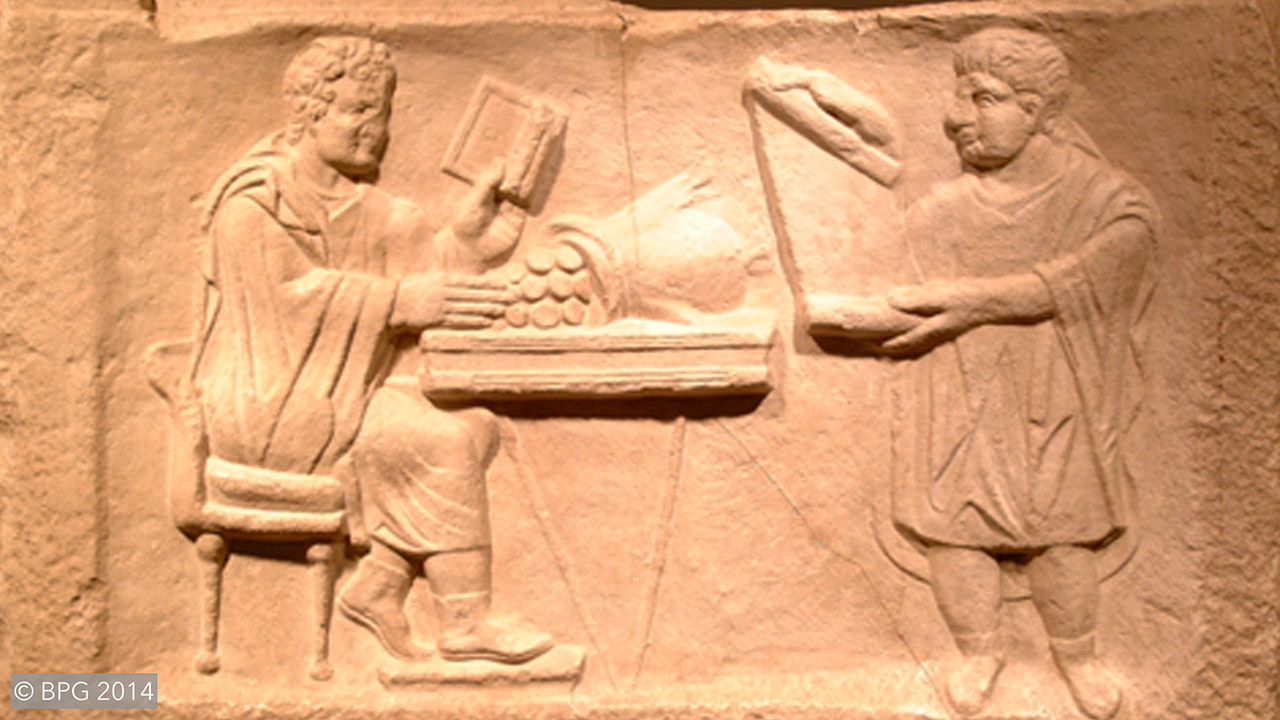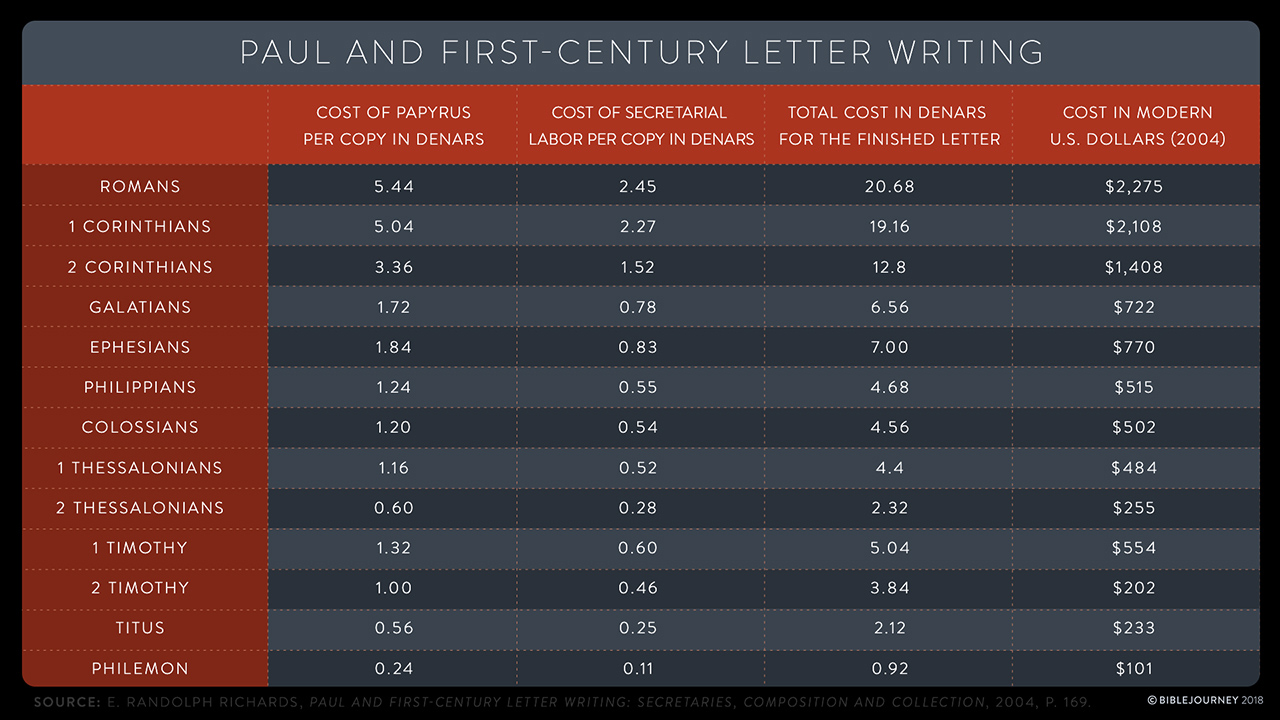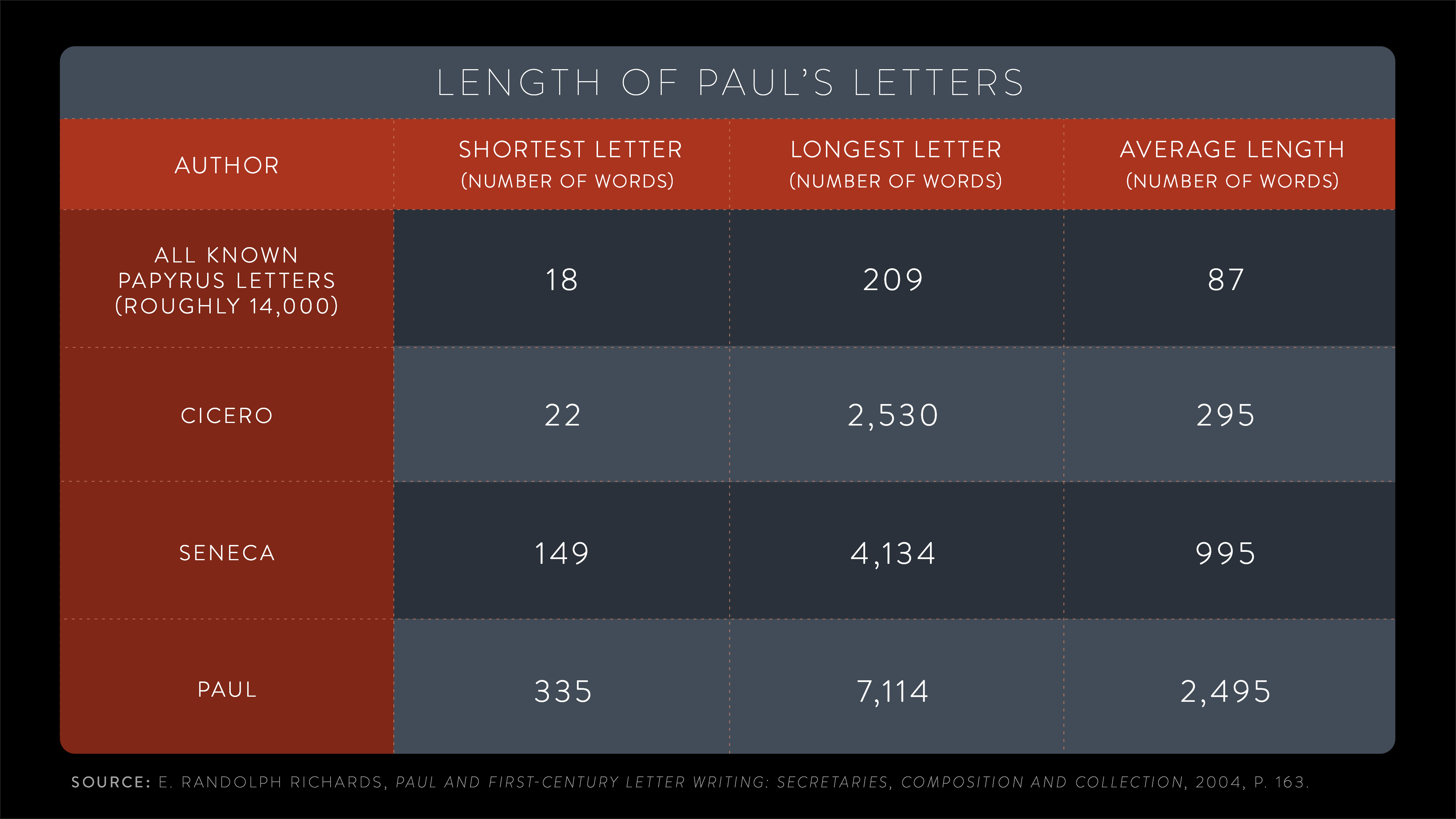Journey Through GalatiansSample

Read the first few verses of each Pauline epistle.
Epistles: Behind the Text
To dig into the details of Paul’s letter-writing, here are some short readings about the kind of materials, length of time and use of a scribe in his day.

Letter Writing in the First Century
Letter writing in the first century was no casual matter. Each letter required planning and logistics. Their financial cost alone made them serious investments for Paul and his patrons. We can estimate that a copy of Romans for example, the longest of Paul’s letters, would have taken two or three days to produce. Preparing it for dispatch, including one copy for mailing and one for backup, would have cost the equivalent of more than $2,000 (US) in today’s currency.
So while we remember that while these books were originally letters, their content would not have been taken lightly. Their contents would be carefully crafted. They were sent at a significant cost to Paul and the early Christian community. Each of them offers a message that Paul viewed as essential for early Christians, which will be evident in these letters’ energy and sense of urgency.
Reference: E. Randolph Richards, Paul and First-Century Letter Writing: Secretaries, Composition and Collection, 2004, pp. 47, 156-157, 165, 168.
Relative Costs of Producing New Testament Letters
See the table below for an approximation of the relative costs of producing the various New Testament Epistles:

Table quoted from: E. Randolph Richards, Paul and First-Century Letter Writing: Secretaries, Composition and Collection, 2004, p. 169.
The Length of Paul’s Letters Compared to Other Ancient Letters
While the form of Paul’s letters is often typical of ancient letters, the length of his letters is not. On average they are more than 25 times longer than typical personal letters in antiquity. The average length of a private letter in Greco-Roman antiquity was 87 words. Pauline epistles average 2,495 words apiece.
Dr. Richards notes that while literary figures like Seneca and Cicero wrote longer letters than the average citizen, their letters also fall far short of the Pauline average, as shown in the table below.

How Long Did it Take for Paul to Write His Letters?
From what we know of ancient scribal practices, a typical secretary could write roughly 85 lines per hour, but the number of hours a secretary could write in an average day would be limited by a variety of factors:
Allowing secretaries time to prepare the papyrus sheets, score the lines on the sheets, mix the ink, etc. (we should not forget to factor in time to travel, the inevitable interruptions, and the amount of daylight), it seems wise to suggest no more than five hours of writing per day.
If 1 Corinthians had 908 lines, how many days would it have taken to make one copy? (You may refer to the slide above.)
At 85 lines per hour over 5 hours per day, a scribe could produce 425 lines per day. In two days, 850 lines could be produced. So that would require just over two days of work.
See a table below with approximations of how long it would take to produce copies of each of the New Testament Epistles.

As startling as those totals may be, Richards suggests that producing an original polished draft of these letters would take many times longer to complete. Romans, for example, may have required the services of a secretary for more than ten days of preparation, between an initial draft, its revision, and any other note-taking sessions or discussion that may have been involved.
Table and quotes from: E. Randolph Richards, Paul and First-Century Letter Writing: Secretaries, Composition and Collection, 2004, pp. 164-165.
Scripture
About this Plan

Have you ever wished for a Bible study that could take you beyond surface-level reading? If so, get ready for our journey through the book of Galatians! You'll get to immerse yourself in Scripture (by looking at key terms and ideas), explore what's behind it (by learning historical-cultural background), and also discover its impact by considering its implications, not only for you, but for the global church. Let's dive in!
More
We would like to thank Bible Journey Ministries for providing this plan. For more information, please visit: https://www.biblejourney.com
Related Plans

The Mission | the Unfolding Story of God's Redemptive Purpose (Family Devotional)

God vs Goliath: The Battle Before the Battle

Refresh Your Soul - Whole Bible in 2 Years (3 of 8)

Refresh Your Soul - Whole Bible in 2 Years (1 of 8)

WORSHIP: More Than a Song

Light Has Come

Go Tell It on the Mountain

And His Name Will Be the Hope of the World

Refresh Your Soul - Whole Bible in 2 Years (4 of 8)
